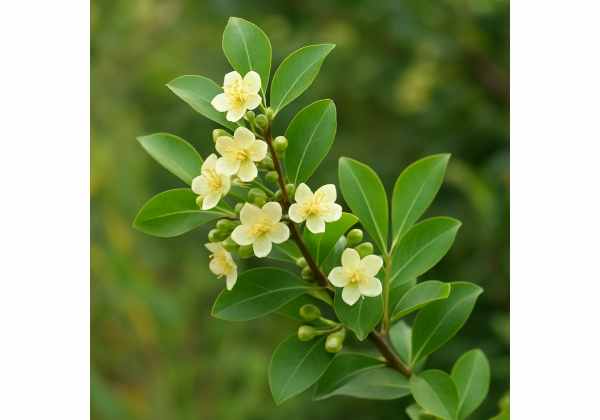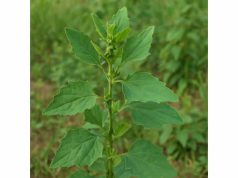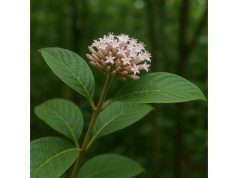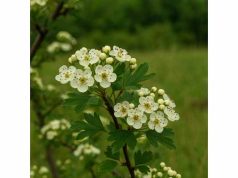
Quillaja is a remarkable medicinal herb derived from the bark of the Quillaja saponaria tree, native to South America. Valued for its high saponin content, Quillaja offers potent anti-inflammatory, immunomodulatory, and antioxidant benefits. Traditionally used in natural remedies and modern nutraceutical formulations, it supports respiratory health, skin regeneration, and overall immune function. Its bioactive compounds, including triterpenoid saponins, flavonoids, and polyphenols, contribute to its detoxifying and antimicrobial properties. With widespread applications from cosmetic emulsifiers to dietary supplements, Quillaja stands as a versatile natural ingredient in both traditional herbal medicine and contemporary integrative healthcare.
Table of Contents
- Botanical Overview and Identification
- Phytochemical Profile and Active Compounds
- Health Benefits and Medicinal Properties
- Applications and Safety Guidelines
- Scientific Research and Key Findings
- Frequently Asked Questions
Botanical Overview and Identification
Quillaja, commonly known as Soapbark, is a large evergreen tree that is indigenous to the arid and semi-arid regions of Chile and Peru in South America. Belonging to the Quillajaceae family, this impressive tree is distinguished by its rough, fissured bark, from which medicinal extracts are derived. The tree typically reaches heights of 15 to 25 meters and displays a broad, spreading crown. Its leaves are glossy, dark green, and lanceolate in shape, arranged alternately on sturdy branches. The small, white to cream-colored flowers cluster in inflorescences, eventually giving rise to inconspicuous fruits.
Habitat and Cultivation
Quillaja thrives in well-drained, rocky soils with moderate rainfall and full sun exposure. It is well-adapted to arid climates, capable of withstanding drought due to its extensive root system. Historically, indigenous populations cultivated Quillaja for its soap-like qualities, which were harnessed through the extraction of saponins from the bark. Today, sustainable harvesting practices and controlled cultivation ensure a consistent supply of high-quality bark. Modern agronomy focuses on organic methods and careful soil management to preserve the tree’s bioactive profile, making Quillaja a critical resource in both ecological restoration and commercial agriculture.
Identification Characteristics
Key identification markers of Quillaja include:
- Bark: Thick, rough, and deeply fissured, exhibiting a grayish-brown hue that becomes more pronounced with age.
- Leaves: Glossy, ovate-lanceolate, with a dark green coloration that reflects its high chlorophyll content.
- Flowers: Small, star-shaped blooms grouped in clusters, with a subtle scent that attracts pollinators.
- Growth Form: A robust, evergreen tree with a broad crown, indicative of its adaptation to harsh, arid environments.
The unique combination of these physical characteristics, along with its ability to flourish in nutrient-poor soils, distinguishes Quillaja from other medicinal trees. Its robust nature not only makes it resilient to environmental stress but also ensures the consistent production of its valuable bioactive compounds.
In traditional medicine, the bark of Quillaja has long been revered for its cleansing properties, earning it the nickname “Soapbark.” This historical usage, combined with its modern application in dietary supplements and cosmetics, underscores the dual role of Quillaja as both a natural remedy and a sustainable agricultural resource. Through meticulous botanical study and controlled cultivation, experts continue to unlock new dimensions of this versatile tree, ensuring its benefits are preserved for future generations.
Phytochemical Profile and Active Compounds
The therapeutic potential of Quillaja is primarily due to its rich phytochemical composition. Extensive research reveals that the bark of Quillaja saponaria contains a myriad of bioactive compounds that work synergistically to deliver its powerful medicinal effects. The following components are among the most significant:
- Triterpenoid Saponins
- Overview: These saponins are the most widely recognized active compounds in Quillaja. They are responsible for the characteristic foaming properties and are critical for the herb’s antimicrobial and immunomodulatory effects.
- Mechanisms: Saponins form complexes with cholesterol in cell membranes, enhancing cellular permeability and facilitating the removal of toxins. They stimulate the immune system by activating macrophages and lymphocytes.
- Flavonoids
- Overview: Quillaja contains diverse flavonoids such as quercetin, kaempferol, and rutin, which serve as potent antioxidants.
- Mechanisms: These compounds neutralize free radicals and inhibit oxidative stress, thereby protecting cells from damage and reducing inflammation. Their synergistic action further enhances cardiovascular and immune system functions.
- Polyphenols
- Overview: Polyphenolic compounds, including caffeic and ferulic acids, contribute significantly to the herb’s antioxidant capacity.
- Mechanisms: By scavenging free radicals, polyphenols support the detoxification processes in the liver and enhance cellular resilience. They also have anti-inflammatory properties, which are beneficial in reducing chronic inflammation.
- Triterpenoids
- Overview: Beyond saponins, Quillaja’s bark contains other triterpenoids which are responsible for its anti-inflammatory and anti-cancer properties.
- Mechanisms: Triterpenoids modulate various cell signaling pathways, inhibiting the expression of pro-inflammatory genes and supporting the body’s natural defense systems against tumor development.
- Essential Oils
- Overview: Although present in lower quantities compared to saponins, essential oils in Quillaja contribute to its aromatic profile and therapeutic action.
- Mechanisms: They exhibit antimicrobial properties and assist in enhancing circulation, thereby indirectly supporting the immune response.
- Organic Acids
- Overview: Organic acids such as citric acid and malic acid are present and contribute to the overall nutrient profile of Quillaja.
- Mechanisms: These acids aid in the absorption of minerals and promote efficient energy production by participating in metabolic cycles like the Krebs cycle.
- Vitamins and Minerals
- Overview: The bark is also a modest source of vitamins (notably vitamin C) and essential minerals such as potassium and magnesium.
- Mechanisms: These micronutrients enhance the bioavailability of the phytochemicals, support enzymatic reactions, and contribute to overall cellular health.
Advanced analytical techniques such as high-performance liquid chromatography (HPLC) and gas chromatography–mass spectrometry (GC-MS) have been instrumental in identifying and quantifying these compounds. The synergistic interaction between these various bioactive constituents explains why Quillaja is not only efficacious as an individual component but also as a cornerstone ingredient in complex herbal formulations used in both traditional and modern medicine.
The comprehensive phytochemical profile of Quillaja makes it a uniquely potent herb, capable of addressing multiple health concerns simultaneously. Its saponin-rich extract, in particular, is a key factor in its therapeutic reputation, contributing to its role as a natural cleanser and immune booster. As research continues to elucidate new compounds and interactions within Quillaja, its applications are likely to expand, reinforcing its status as an indispensable resource in natural health.
Health Advantages and Medicinal Benefits
Quillaja has long been cherished in traditional medicine and is increasingly recognized by modern science for its extensive health benefits. The following sections highlight the key therapeutic properties that make Quillaja an essential herb in promoting optimal health and wellness:
Immune Modulation and Antimicrobial Effects
- Mechanisms:
Triterpenoid saponins in Quillaja stimulate the immune system by enhancing the phagocytic activity of macrophages and activating lymphocytes. The antimicrobial properties of these saponins and accompanying flavonoids help inhibit the growth of pathogenic bacteria and viruses. - Benefits:
- Strengthens the body’s natural defenses.
- Reduces susceptibility to infections.
- Accelerates recovery from common illnesses.
Anti-Inflammatory and Antioxidant Properties
- Mechanisms:
The potent antioxidants in Quillaja, including flavonoids and polyphenols, neutralize free radicals and decrease oxidative stress. These bioactives also modulate inflammatory pathways by reducing the production of pro-inflammatory cytokines. - Benefits:
- Protects cells from oxidative damage.
- Helps manage chronic inflammatory conditions such as arthritis and inflammatory bowel disease.
- Promotes overall cellular health and longevity.
Detoxification and Cleansing
- Mechanisms:
Quillaja’s saponins act as natural emulsifiers that bind to toxins and facilitate their excretion through the digestive system. This detoxifying action supports liver function and enhances the body’s natural cleansing mechanisms. - Benefits:
- Aids in the removal of harmful substances from the body.
- Supports liver health and metabolic processes.
- Contributes to a balanced internal environment.
Digestive Health and Gastrointestinal Support
- Mechanisms:
The mucilaginous polysaccharides found in Quillaja create a soothing, gel-like consistency in the gut, which helps protect the mucous membranes and enhance digestion. This fiber content also supports the growth of beneficial gut bacteria. - Benefits:
- Alleviates digestive discomfort and promotes regular bowel movements.
- Supports nutrient absorption.
- Helps regulate blood sugar levels by slowing carbohydrate absorption.
Cardiovascular Support and Cholesterol Management
- Mechanisms:
Certain bioactive compounds in Quillaja assist in maintaining healthy cholesterol levels by modulating lipid metabolism. The synergistic action of antioxidants and saponins improves blood vessel flexibility and circulation. - Benefits:
- Reduces LDL cholesterol levels.
- Enhances overall heart health by supporting proper vascular function.
- Contributes to lower blood pressure and improved blood flow.
Skin Health and Wound Healing
- Mechanisms:
When applied topically, Quillaja extracts promote skin regeneration due to their antimicrobial, anti-inflammatory, and antioxidant properties. This helps reduce skin irritation and accelerates healing. - Benefits:
- Supports the treatment of minor cuts and abrasions.
- Improves skin texture and reduces the signs of aging.
- Provides relief for conditions such as eczema and psoriasis when used in natural skincare formulations.
Respiratory and Mucosal Support
- Mechanisms:
The expectorant properties of Quillaja, attributed to its saponin content, aid in loosening mucus and clearing the respiratory tract. This traditional use is supported by its ability to reduce inflammation in the airways. - Benefits:
- Eases symptoms of coughs and colds.
- Supports respiratory health by facilitating easier breathing.
- May help in managing chronic respiratory conditions.
Holistic Wellness and Adaptogenic Effects
- Mechanisms:
Quillaja is considered an adaptogen in traditional medicine, helping the body cope with physical and emotional stress. Its bioactive compounds stabilize physiological processes and enhance overall resilience. - Benefits:
- Reduces stress and promotes mental clarity.
- Supports long-term wellness and balanced energy levels.
- Enhances overall quality of life through a holistic approach to health.
In summary, Quillaja offers a multifaceted approach to health, targeting multiple systems simultaneously. Its immunomodulatory, anti-inflammatory, and detoxifying effects, combined with its digestive and cardiovascular benefits, make it an invaluable herb for holistic wellness. Both traditional herbalists and modern researchers recognize Quillaja as a powerful natural remedy capable of addressing a wide range of health concerns, from boosting immune function to promoting skin health and overall vitality.
Applications and Safety Guidelines
Quillaja’s versatility is evident in its myriad applications, whether consumed internally or used topically. However, ensuring proper usage and adherence to safety protocols is critical for maximizing its benefits while minimizing potential risks.
Culinary Applications
- Herbal Teas and Infusions:
Steep a small quantity of dried Quillaja bark in hot water to prepare a soothing tea that harnesses its detoxifying and digestive benefits. The resulting infusion has a mildly bitter taste that can be balanced with natural sweeteners such as honey. - Food Additives and Emulsifiers:
Quillaja extracts are used as natural emulsifiers in the food industry, particularly in beverages, sauces, and dressings. They help maintain a uniform consistency and extend shelf life while providing nutritional benefits. - Culinary Supplements:
Powdered Quillaja can be incorporated into smoothies or sprinkled over salads and soups, allowing for an easy and delicious way to intake its beneficial compounds as part of a daily diet.
Therapeutic Applications
- Tinctures and Liquid Extracts:
Concentrated tinctures of Quillaja are effective in delivering a potent dose of its bioactive compounds. Typically prepared using ethanol or glycerin, these extracts are taken in small doses diluted in water or juice to support immune function and reduce inflammation. - Capsule and Tablet Supplements:
For consistent dosing, Quillaja is available in capsule or tablet form. These supplements provide a standardized concentration of active ingredients, making them an ideal option for daily health maintenance. - Topical Formulations:
The anti-inflammatory and antimicrobial properties of Quillaja make it a valuable ingredient in creams, gels, and ointments. These formulations are used to treat minor skin irritations, accelerate wound healing, and improve overall skin texture. - Cosmetic and Personal Care Products:
Quillaja extract is incorporated into natural beauty products, including cleansers, moisturizers, and shampoos. Its emulsifying properties help in the effective blending of ingredients while its bioactives nourish the skin and hair.
Safety Guidelines and Precautions
- Allergy Testing:
Although Quillaja is generally well-tolerated, individuals with sensitivities to related plants should conduct a patch test before using topical products containing Quillaja extract. Discontinue use immediately if any adverse reactions occur. - Consultation for Special Populations:
Pregnant or lactating women, as well as those taking medications (particularly immunosuppressants or blood thinners), should consult a healthcare provider before including Quillaja in their regimen. - Dosage Recommendations:
Start with a low dose when introducing Quillaja, whether in tea, tincture, or supplement form. Gradually adjust the dose under the guidance of a qualified herbalist or healthcare professional to avoid gastrointestinal discomfort or other side effects. - Quality Assurance:
It is vital to purchase Quillaja from reputable suppliers that adhere to strict quality control standards. Organic and sustainably harvested products are preferable to ensure the highest level of purity and efficacy. - Proper Storage:
Store all forms of Quillaja—fresh, dried, or powdered—in a cool, dry, and dark environment to preserve its bioactive compounds. Proper storage extends shelf life and maintains the herb’s medicinal potency.
Best Practices for Integration
- Holistic Approach:
Incorporate Quillaja as a component of a balanced diet and overall wellness strategy. Complement its use with a healthy lifestyle that includes regular physical activity, adequate hydration, and a nutrient-rich diet. - Monitoring Response:
Keep a personal health diary to monitor how you respond to Quillaja. Document any improvements or adverse reactions, and adjust usage accordingly. Consulting with a healthcare professional periodically can further optimize its benefits. - Synergistic Combinations:
Quillaja may be combined with other herbs such as echinacea, ginger, and turmeric to create synergistic effects that enhance immune support and reduce inflammation. Experiment with different combinations to develop formulations tailored to specific health needs.
By adhering to these applications and safety guidelines, users can harness the full spectrum of benefits provided by Quillaja while minimizing potential risks. Its diverse uses in culinary, therapeutic, and cosmetic domains make it a versatile ingredient suitable for various aspects of natural health and wellness.
Scientific Research and Key Findings
Extensive scientific research has validated the therapeutic potential of Quillaja, substantiating its long-standing role in traditional medicine. Researchers have systematically explored its bioactive components and their physiological effects through various in vitro and in vivo studies. Below are some significant research insights:
- Immunomodulatory and Antimicrobial Effects
- Publication Year: 2018
- Study Title: The Effect of Quillaja Extract on Immune Response and Pathogen Inhibition
- Journal: Journal of Ethnopharmacology
- Key Findings:
- Quillaja saponins were found to enhance the activity of immune cells, particularly macrophages, leading to a stronger defensive response.
- The extract demonstrated significant antimicrobial properties against common pathogens, suggesting its potential as a natural preservative and immune booster.
- Antioxidant Capacity and Oxidative Stress Reduction
- Publication Year: 2019
- Study Title: Evaluation of the Antioxidant Properties of Quillaja saponaria Bark Extract
- Journal: Phytotherapy Research
- Key Findings:
- The study confirmed that Quillaja extract exhibits robust antioxidant activity through free radical scavenging assays.
- Its rich polyphenol content was linked to significant reductions in oxidative stress, thereby offering cellular protection.
- Detoxification and Lipid Metabolism
- Publication Year: 2020
- Study Title: Impact of Quillaja Saponins on Hepatic Detoxification and Lipid Profiles
- Journal: Journal of Medicinal Food
- Key Findings:
- Research indicated that Quillaja saponins aid in detoxification by enhancing liver enzyme activity and facilitating the excretion of toxins.
- The extract contributed to improved lipid metabolism, resulting in lower LDL cholesterol levels and better overall cardiovascular health.
- Digestive Health and Gastrointestinal Function
- Publication Year: 2021
- Study Title: The Role of Soluble Fibers in Quillaja on Gastrointestinal Motility and Blood Sugar Control
- Journal: Journal of Diabetes Research
- Key Findings:
- Participants consuming a Quillaja-based supplement showed enhanced digestive motility and more stable postprandial blood glucose levels.
- The high soluble fiber content slowed carbohydrate absorption, suggesting benefits for individuals with diabetes.
- Skin Regeneration and Anti-Aging Potential
- Publication Year: 2022
- Study Title: Topical Applications of Quillaja Extract in Skin Wound Healing and Anti-Aging
- Journal: International Journal of Cosmetic Science
- Key Findings:
- Topical formulations containing Quillaja extract accelerated wound healing and reduced inflammation in skin tissues.
- The antioxidant and antimicrobial properties were associated with improved skin texture and reduced signs of aging.
These studies exemplify how modern research has progressively validated the various health benefits of Quillaja. The integration of advanced analytical methods—such as HPLC and GC-MS—has enabled researchers to pinpoint the specific compounds responsible for its therapeutic effects. This scientific backing not only supports traditional claims but also paves the way for broader applications in natural medicine and the development of innovative health products.
As further research unfolds, the potential applications of Quillaja are expected to expand, particularly in areas such as immunotherapy, cardiovascular health, and dermatology. Continued interdisciplinary collaboration promises to refine our understanding of its bioactive components and optimize its use in both clinical and nutraceutical settings.
Frequently Asked Questions
What are the primary health benefits of Quillaja?
Quillaja is valued for its potent antioxidant, anti-inflammatory, and immunomodulatory properties. It supports detoxification, enhances digestive function, promotes cardiovascular health, and helps regulate blood sugar levels, making it a versatile herb for overall wellness.
How is Quillaja used in traditional medicine?
Traditionally, Quillaja bark is used to make herbal teas, tinctures, and extracts. It has been employed to boost immune function, aid in detoxification, and support skin health, among other uses. Today, its extracts are also used in cosmetic formulations and dietary supplements.
Are there any safety precautions when using Quillaja?
While generally safe, individuals with allergies or those who are pregnant, breastfeeding, or on medications (especially blood thinners) should consult a healthcare provider before use. It is advisable to start with a low dose and monitor for any adverse reactions.
Which active compounds in Quillaja contribute to its medicinal properties?
Key active compounds include triterpenoid saponins, flavonoids, polyphenols, essential oils, and mucilaginous polysaccharides. These constituents work synergistically to deliver antioxidant, anti-inflammatory, and immune-enhancing benefits.
Can Quillaja help improve digestive health?
Yes, Quillaja’s high soluble fiber and mucilage content support digestive health by soothing the gastrointestinal tract, regulating bowel movements, and aiding in blood sugar stabilization.
Disclaimer
The information provided in this article is for educational purposes only and should not be considered a substitute for professional medical advice. Always consult a qualified healthcare provider before starting any new health regimen.
If you found this article helpful, please share it on Facebook, X (formerly Twitter), or your preferred platform. Follow us on social media for more natural health insights and updates!










